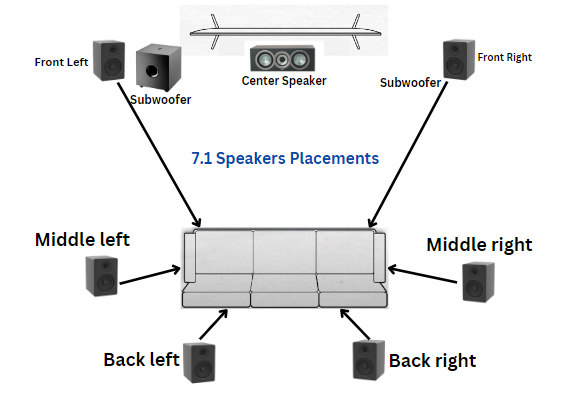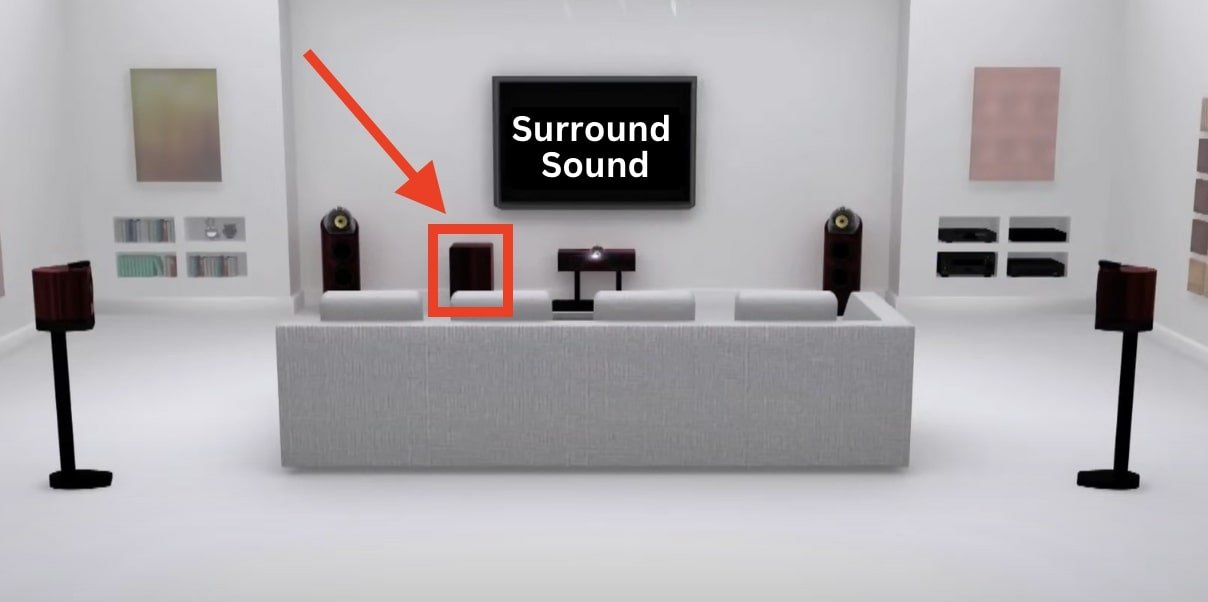This Post may contain affiliate links, when you purchase through links on our site, we may earn an affiliate commission at no extra cost to you. Here’s how it works.
Installing and setting up a surround sound system is not an easy task. Your silly mistake can keep you from listening to immersive audio quality. So, we always prefer sound professionals to do it for you.
Table of Contents
ToggleHowever, achieving optimal sound quality involves more than just plugging in speakers and playing. Many people make common mistakes during setup that can prevent their audio experience, you have to avoid it.
Here we listed a few Common Mistakes to Avoid When Setting Up Surround Sound and provided probable solutions:
Incorrect Speaker Placement:
Why It Matters: Proper speaker placement is crucial for achieving immersive sound quality. Placing speakers in the wrong positions can lead to poor sound quality.
How to Avoid: Follow the manufacturer’s recommendations for speaker placement or hire professionals. Generally, the front left and right speakers are placed at ear level, angled towards the listening area. The center speaker should be below the TV screen, while the surround speakers should be placed slightly behind and to the sides of the main listening area. Subwoofers are more flexible in placement but should be placed in a spot where they don’t create muddiness.

Neglecting Room Acoustics:
Why It Matters: Hard walls, roofs, or floor surfaces can cause reflections and echoes. Room acoustics play a significant role in how sound behaves in your space.
How to Avoid: Assess your room’s acoustics before setting up your system. Use rugs, curtains, and furniture to help manage sound reflections and absorption. You can use acoustic panels or bass traps to change room acoustic behavior. Generally putting more items of furniture in your room can solve this easily.

Ignoring Speaker Calibration:
Why It Matters: Many surround sound systems come with calibration options, skipping this step can lead to imbalanced sound and poor audio quality.
How to Avoid: Use the automatic calibration tool provided by your AV receiver. You can do a speaker calibration manual, use a sound level meter, and test tones to ensure each speaker is outputting sound at the correct level.
Mismatched Speakers:
Why It Matters: Mixing different brands or models of speakers with the same surround sound system can lead to lower or unmatched sound quality. Different wats of the speaker may affect overall audio quality.
How to Avoid: Stick to a matching set of speakers from the same model or brand. If you want to use different brands of speakers for surround sound, choose a premium brand with a matching configuration of speakers.
Neglecting Subwoofer Placement:
Why It Matters: The subwoofer is crucial to deliver deep bass and low-frequency sounds. Incorrect placement of a subwoofer can be the reason behind lower bass quality.
How to Avoid: Placing the subwoofer near a wall or in a corner can enhance bass response. You can experiment with subwoofer placement to find the best location for balanced bass.

Ignoring Receiver Settings:
Why It Matters: Your AV receiver’s settings play a significant role in the overall sound experience. Failing to configure settings can lead to bad audio performance.
How to Avoid: Adjust your receiver’s settings according to your room and speaker configuration. Follow the receiver’s manual for guidance on setting up and optimizing audio settings. If the problem is still yet to be solved, hire an audio setup professional.
Overloading the System:
Why It Matters: Having speakers and amplifiers that are not matched in power handling can degrade the performance of the whole system.
How to Avoid: Use all speakers and amplifiers of your surround sound system that are compatible in terms of power handling. Your amplifiers must be capable of handling those overloaded speakers. If you already use the maximum power of an amplifier, turning the volume up too high can hurm your whole sound system.
Improper Use of Cables:
Why It Matters: The quality and type of cables used can impact the overall sound quality. Using wires that are too thin can lead to signal degradation and reduced audio performance.
How to Avoid: Use high-quality, shielded cables to connect your whole sound system. For most surround sound systems, 16-gauge wire is sufficient for short runs, while 14-gauge or thicker wire is for longer distances. Ensure that cables are connected securely and avoid running cables near power sources.
Not Considering Future Upgrades:
Why It Matters: If you plan to upgrade your surround sound system in the future, you must require an upgrade potential amplifier. For example: If you have an amplifier that supports a 5.1 surround sound system, in the future you can’t convert that to 7.1.
How to Avoid: Choose an AV receiver that comes with enough channels and inputs for future upgrades. Investing in high-quality, flexible amplifiers in a surround sound system now can make future upgrades smoother. For example: If you have an Amplifier that is capable of supporting a 9.2 surround system, but now you’ve connected only 5.1, this sound system can easily be upgradable with the current amplifier.
Skipping Testing and Tuning:
Why It Matters: After setting up your surround sound system, must test and tune the system to ensure everything is working at its best.
How to Avoid: For testing and tuning you can play a variety of content such as movies, music, and games. Use test tones and calibration tools to make final adjustments. Now there are many content creators and brands that have their own music for testing higher sound systems, you can try any of them.
I think these are the few Common Mistakes to Avoid When Setting Up Surround Sound, ensure that you follow this guidance to experience immersive audio quality.
Conclusion:
For those who don’t know about a higher-end sound system and how it works can be difficult to set up properly. Setting up a surround sound system involves difficult planning and attention. By avoiding these common mistakes such as placement, calibration, and equipment compatibility, cable management, you can create an immersive and high-quality audio experience.
A surround sound system delivers the full impact of your favorite movies, games, and music, making them perfect for better results. If you still have any questions regarding this topic comment below.
